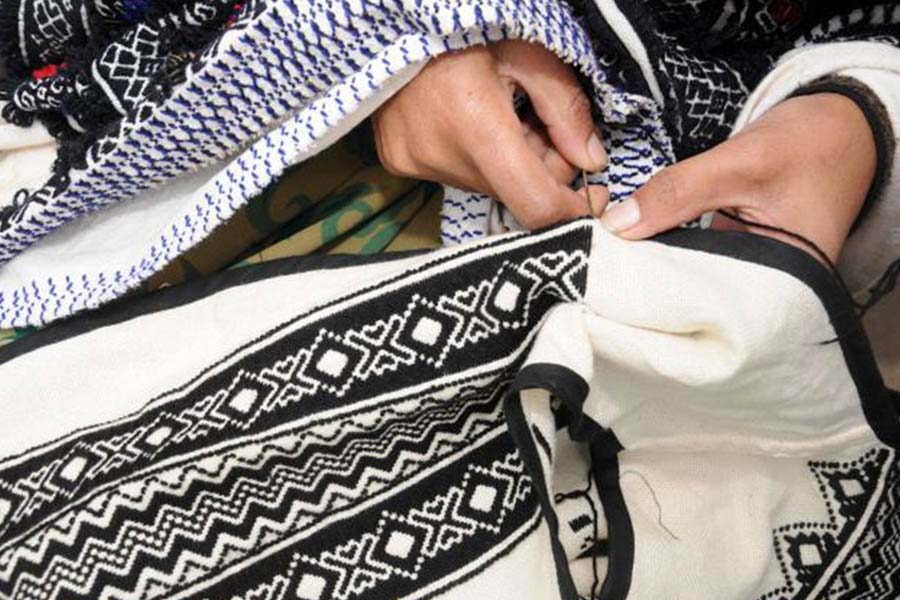Threads of Toda art
If we captured all of India’s traditional tribal embroidery styles on quilted fabric, the result would be a spectacular tapestry of colours, patterns, designs and materials. Each tribal embroidery type is highly nuanced and distinctive, representing the quintessential characteristics of the tribe it belongs to. Despite the growth of modern textiles and westernisation, these art forms have been carefully preserved by the tribal communities of our country.
Let us look at one such unique tribal embroidery style—Toda embroidery, which continues to enchant fabric designers, textile lovers, connoisseurs and collectors alike. This exclusive centuries-old thread-work is practised by the women of the Toda tribe, who inhabit the Nilgiris region in Tamil Nadu.
Tracing the tradition
The Todas are said to belong to the pastoral community. Apart from being herdsmen and farmers involved in small-time cultivation in grasslands, the tribal folks are also deeply engaged in the tradition of making handicrafts, which include embroidered shawls and cloaks and silver jewellery.
In Toda language, the embroidery tradition is called ‘pukhoor’, which means ‘flower’. The tribal people use local terms like ‘kuty’ and ‘awtty’ (which mean ‘stitching’) and ‘kutyvoy’ (the embroidered piece) to describe the embroidery style. Traditionally, Toda embroidery was done on shawls (called poothukuli), which were worn by both men and women.
A nuanced art form
This embroidery is created using woollen threads in black, red, and sometimes blue on unbleached white cotton. The base material is handwoven in single width and the embroidery is done over it by counting threads.
On one end of the shawl, three stripes are woven—one black and two red; the embroidery is then done on these stripes. Then the two lengths of the fabric are sewn together. Wide red and black band are woven at the end of the poothukuli. Embroidery is done in between the bands to form a stunning ‘pallu’. The same pattern can be recreated on a saree too.
The embroidery is cleverly and deftly done in such a manner that both sides of the embroidered fabric are neat and usable. The cloth has a rich, embossed surface after the embroidery is done.
The Toda women create beautiful designs by practice, without tracing the pattern or referring to any book. They count with their fingers and do not use any embroidery frame.
Today, apart from shawls, the tribal women do embroidery on other products like bags, cushion covers, bed covers, purses, table cloth, runners, kurtas and stoles for the discerning customers.
Common designs
The tribal women consider their work as a tribute to nature. This explains why their designs usually symbolise concepts from nature and the daily cycle of life, celestial bodies like the sun and the moon, and motifs from the animal kingdom like reptiles, horns of buffaloes and rabbit ears. Geometric designs are also commonly seen in Toda embroidery. Another familiar design in Toda embroidery is black triangles in a boxed type of design.
There are different designs for different occasions. The embroidery done for happy and grave occasions (like weddings, festivals and funerals) is very elaborate. Earlier, vegetable fibre was used as thread. Nowadays, embroidery threads are used.
Keeping the art form alive
In an effort to bolster the ancient tribal community, the inimitable Toda embroidery style was given the GI tag in the year 2013. It is estimated that, out of a total population of 1,600, only 300-400 Toda women practise the embroidery style. In the past few years, the apex body, Tribal Cooperative Marketing
Development Federation of India has been facilitating training programmes to preserve the art form for generations to come.




